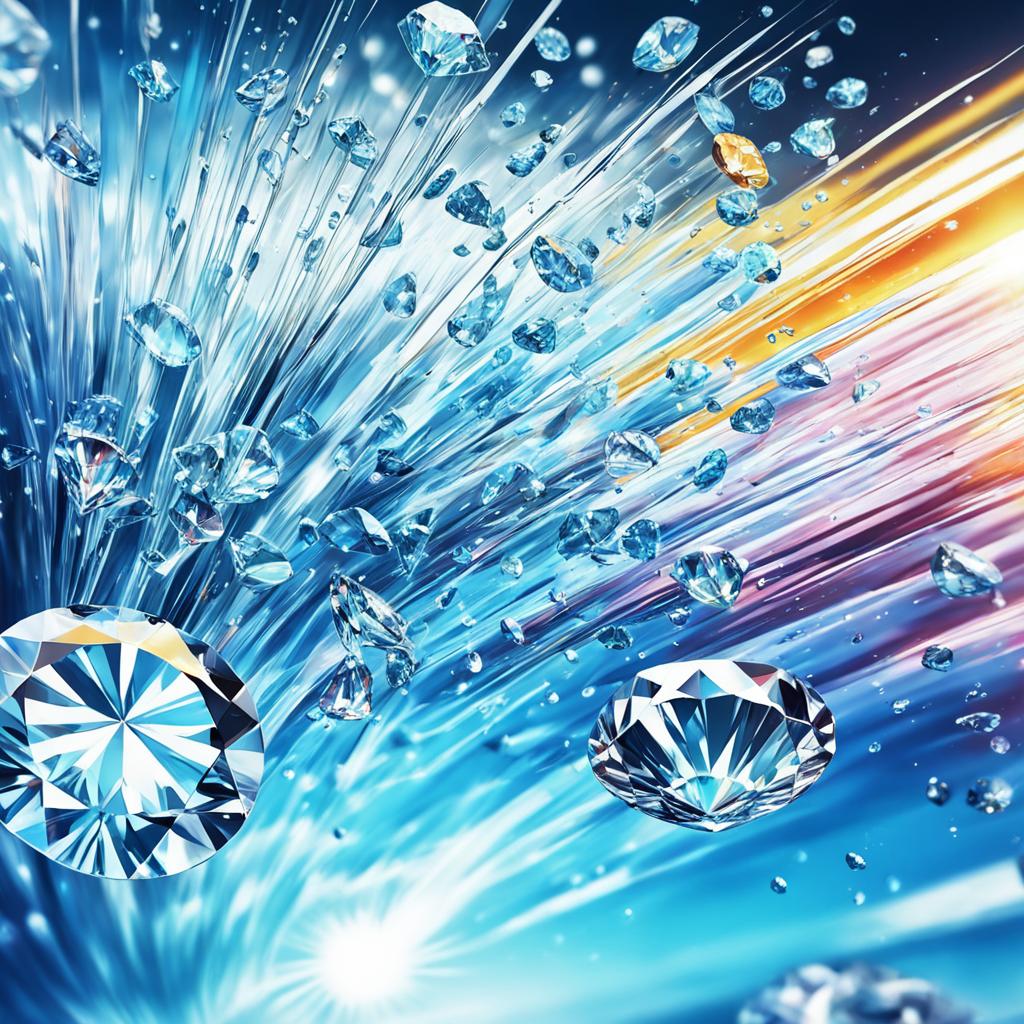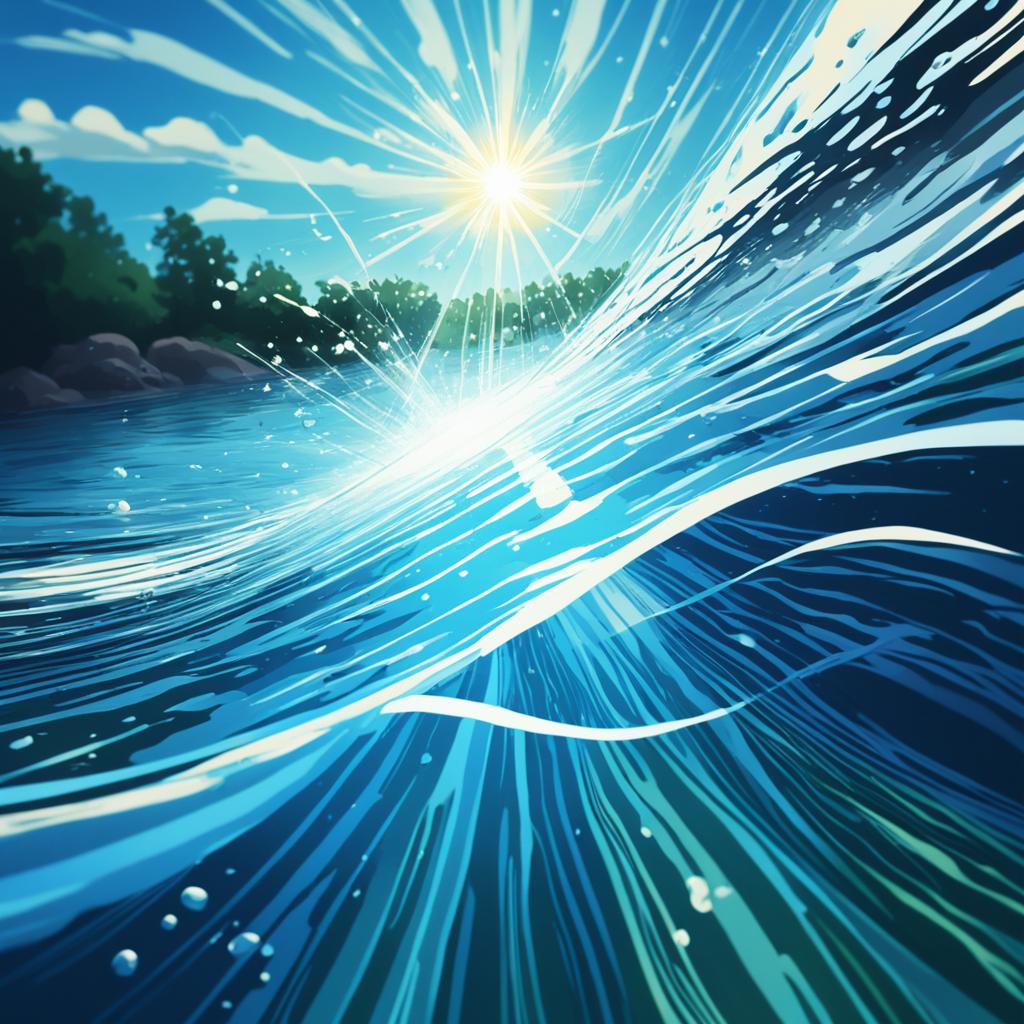Have you ever wondered if the speed of light is constant in every medium it passes through? You might be surprised to learn that the speed of light can actually vary depending on the substance it travels through. In fact, some mediums can slow down light significantly, while others allow it to move faster. So, let’s delve into the fascinating world of light and explore whether it travels faster in water or through diamonds.
When it comes to the speed of light, the properties of the medium play a crucial role. In the case of water and diamonds, they offer vastly different speeds for light propagation. While water is often associated with transparency and clarity, diamonds are renowned for their exquisite beauty and brilliance.
But does light really move faster in water or through diamonds? Join us as we uncover the truth behind this intriguing question and challenge some common beliefs along the way. By the end of this article, you’ll gain a deeper understanding of the complex nature of light and how it behaves in different mediums.
Speed of Light in Water

When it comes to the speed of light, water plays an intriguing role as a medium for its transmission. Unlike in a vacuum, where light travels at approximately 300,000 kilometers per second, the speed of light in water is noticeably slower. In fact, light travels through water at around 225,000 kilometers per second.
So, why is light slower in water compared to a vacuum? The answer lies in the refractive index of water, which is 1.3. This index affects how light behaves as it enters the medium. When light crosses the boundary between two mediums, in this case, vacuum and water, its speed changes due to the varying refractive indices. As a result, the speed of light in water decreases.
Despite the decrease in speed, light can still move relatively fast in water. However, it is important to note that the refractive index of water influences the resulting speed of light within the medium.
Factors Affecting the Speed of Light in Water
The speed of light in water can be influenced by several factors, including temperature and the presence of impurities or dissolved substances. Higher temperatures typically lead to a slight increase in the speed of light in water, while substances dissolved in water can change its refractive index and impact how light propagates through the medium.
Understanding the speed of light in water is not only fascinating from a scientific perspective but also has practical applications in various fields, including optics, telecommunications, and underwater imaging. By studying how light interacts with water, scientists and engineers can develop technologies that enable efficient data transmission, improve underwater imaging systems, and enhance overall optical performance.
This image visually represents the concept of the speed of light in water. It serves as a visual aid to help illustrate the topic and engage readers.
Speed of Light in Diamonds

In diamonds, the speed of light is significantly slower compared to its speed in water or a vacuum. The refractive index of diamonds is 2.42, which results in a much slower speed of light. Light travels at about 125,000 kilometers per second in diamonds, which is only about 42% of its speed in a vacuum. This makes diamonds one of the slowest mediums for light to travel through.
Comparison of Speeds
| Medium | Speed of Light (km/s) | Percentage of Vacuum Speed |
|---|---|---|
| Diamonds | 125,000 | 42% |
| Water | 225,000 | 75% |
| Vacuum | 300,000 | 100% |
Factors Affecting the Speed of Light in Different Mediums

The speed of light in different mediums is influenced by various factors. One of the primary factors is the refractive index of the medium. The refractive index measures how much light is bent or slowed down as it passes through a medium compared to its speed in a vacuum. Generally, the higher the refractive index, the slower the speed of light in that medium.
Additionally, the composition and structure of the medium can also impact the speed of light. Different molecules and arrangements within a medium can affect the interaction between light and matter, causing variations in its speed. For example, in the case of water and diamonds, their unique molecular structures contribute to the difference in the speed of light.
To better understand the relationship between these factors and the speed of light, let’s take a closer look at the refractive indexes of water and diamonds:
| Medium | Refractive Index |
|---|---|
| Water | 1.3 |
| Diamonds | 2.42 |
As seen in the table above, water has a refractive index of 1.3, while diamonds have a refractive index of 2.42. This significant difference in refractive indexes explains why light travels faster in water compared to diamonds.
By understanding the factors that influence the speed of light in different mediums, scientists and researchers can gain insights into the behavior of light and its interaction with matter. This knowledge has practical applications in various fields, including telecommunications, optics, and material science.
Applications and Implications
The speed of light in different mediums, such as water and diamonds, has various applications and implications that span different industries. Let’s explore some of the key areas where understanding the speed of light is crucial.
Telecommunications and Fiber Optics
In the field of telecommunications and fiber optics, the speed of light plays a vital role in data transmission. Fiber optic cables, which are used to transmit vast amounts of information, rely on the principle of total internal reflection to guide light signals through the cables. The efficient transmission of these signals relies on a thorough understanding of the speed of light in different mediums, including water and diamonds. By optimizing the speed of light in these mediums, data can be transmitted quickly, ensuring seamless communication and reliable internet connectivity.
Diamond Sparkle and Brilliance
The slower speed of light in diamonds contributes to the unique sparkle and brilliance that makes diamond jewelry so captivating. When light enters a diamond, it undergoes multiple internal reflections within the stone due to the high refractive index. This phenomenon, known as dispersion, causes the white light to separate into its individual colors, creating a dazzling display of colors and brilliance. The distinct properties of light in diamonds have led jewelers to leverage these characteristics to create stunning and breathtaking diamond jewelry.
In addition to the applications mentioned above, the speed of light in different mediums has implications in various scientific and technological fields. It plays a critical role in optics, astronomy, material characterization, and more. Scientists and researchers continue to explore the complexities of light and its interactions with different mediums to unlock new applications and advance our understanding of the universe.
Speed of Light in Different Mediums
| Medium | Speed of Light (km/s) |
|---|---|
| Vacuum | 299,792 |
| Water | 225,000 |
| Diamonds | 125,000 |
Historical Perspective
The concept of the speed of light has a rich history that dates back to ancient times. Early scholars, such as the Greek mathematician Euclid and the Roman philosopher Anicius Boethius, were among the first to recognize that light has a finite speed. Their observations and theories laid the foundation for further exploration.
Throughout the centuries, scientists and philosophers made significant contributions to our understanding of the speed of light. Notably, individuals like Ole Roemer and James Bradley played instrumental roles in estimating the speed of light through groundbreaking astronomical observations and experiments.
These efforts challenged the prevailing belief in the infinite speed of light and paved the way for new discoveries. Scientists in different eras built upon the findings of their predecessors, allowing our understanding of the speed of light to evolve over time.
Evolution of Understanding
The understanding of the speed of light has evolved over time as scientists conducted more experiments and made new discoveries. Pioneers like Sir Isaac Newton and Albert Einstein played crucial roles in expanding our knowledge of the nature of light and its speed.
Sir Isaac Newton made significant contributions to the study of light through his experiments and theories on optics. His breakthroughs in understanding the behavior of light laid the foundation for further exploration of its properties.
However, it was Albert Einstein’s revolutionary theory of relativity that truly transformed our understanding of the speed of light and its fundamental role in the universe. Einstein’s insights showed that the speed of light is a constant and is the fastest speed attainable in the universe.
This groundbreaking theory not only provided a deeper understanding of the speed of light but also shed light on the nature of time, space, and gravity. It revolutionized the field of physics and laid the groundwork for many scientific advancements.
Today, scientists continue to build upon the work of these pioneers and further our understanding of the speed of light. Ongoing research and technological advancements allow us to explore the various contexts in which light behaves and offers valuable insights into our universe.
The evolution of understanding the speed of light has paved the way for remarkable discoveries and technological advancements. It stands as a testament to the human quest for knowledge and our relentless pursuit of unraveling the mysteries of the universe.
Conclusion
In conclusion, the speed of light varies depending on the medium it travels through. When comparing the speed of light in water and diamonds, it is evident that light travels faster in water. In water, the speed of light is approximately 225,000 kilometers per second, while in diamonds, it is reduced to around 125,000 kilometers per second.
The differences in the speed of light can be attributed to the refractive index and molecular structure of the mediums. The refractive index of water (1.3) is lower than that of diamonds (2.42), causing light to travel faster through water. This fundamental understanding of the speed of light in different mediums has practical applications in various fields.
By comprehending the speed of light in different mediums such as water and diamonds, scientists and engineers can optimize technologies like fiber optics for efficient data transmission. Furthermore, the disparity in the speed of light contributes to the sparkle and brilliance observed in diamonds, making them a sought-after gemstone.
In conclusion, the study of the speed of light in water and diamonds not only provides valuable insights into the nature of light but also has practical implications in our technological advancements and the aesthetics of precious gemstones.


